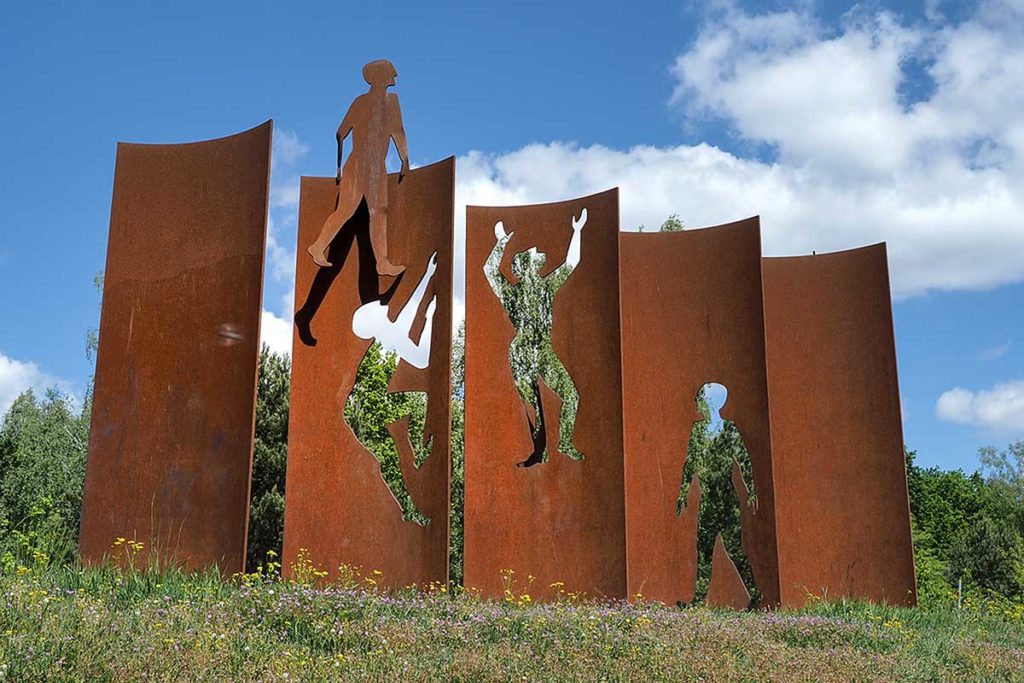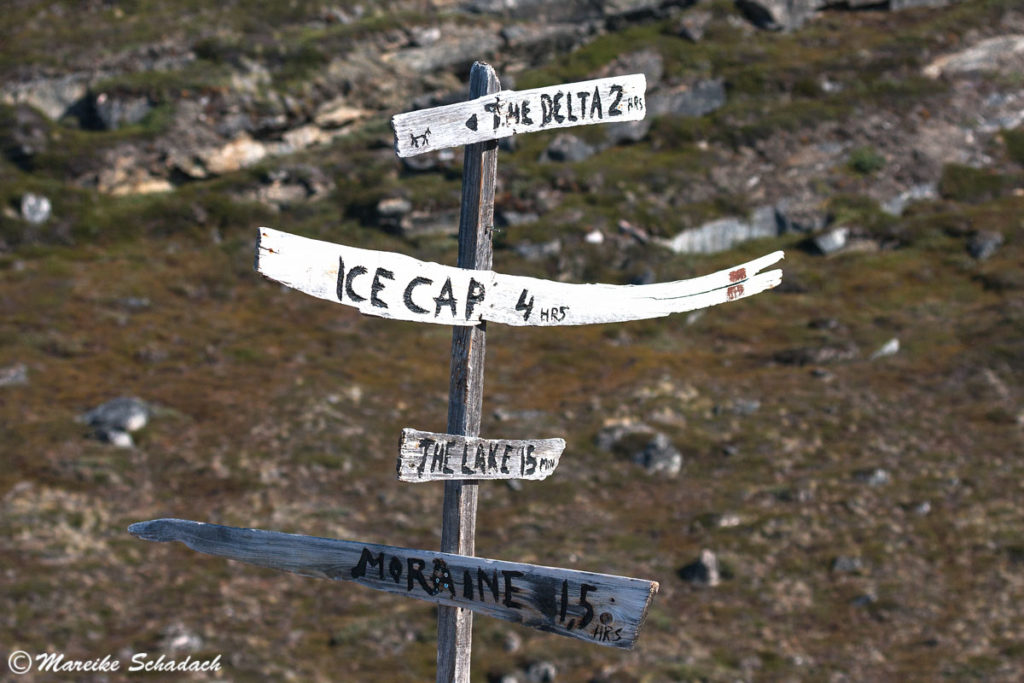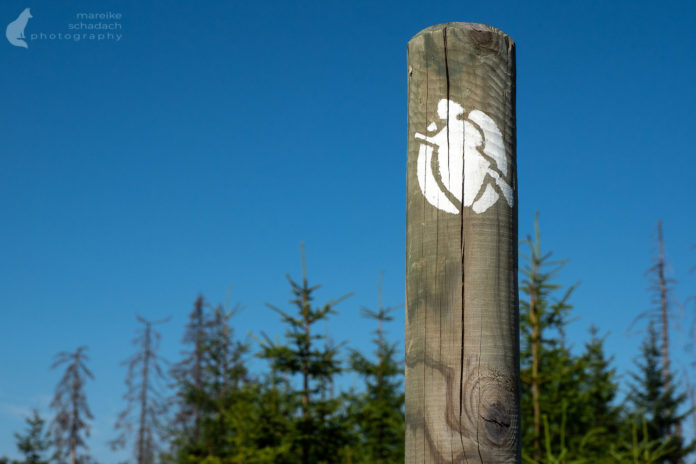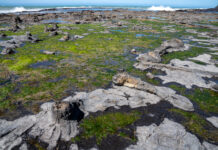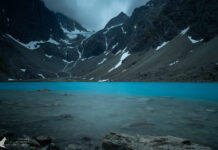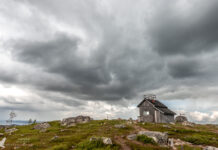Harz Mountains, Germany. The Harzer Hexenstieg (Harz Witch's Path) leads across the Harz Mountains over a length of almost 100 kilometers. The varied route runs through deciduous and coniferous forests, across moors and up to the highest mountain in the Harz, the Brocken. There is a lot to discover during the hike, such as the history of mining, the Harz narrow-gauge railroad, the significance of the Brocken and, of course, the sagas and legends about the Harz witches.
You always wanted to do a multi-day hike? Or you are looking for a versatile route to train for a longer trekking tour? Then the Hexenstieg in the Harz Mountains is just the thing.
Unassigned, unpaid advertising. The article contains affiliate links.
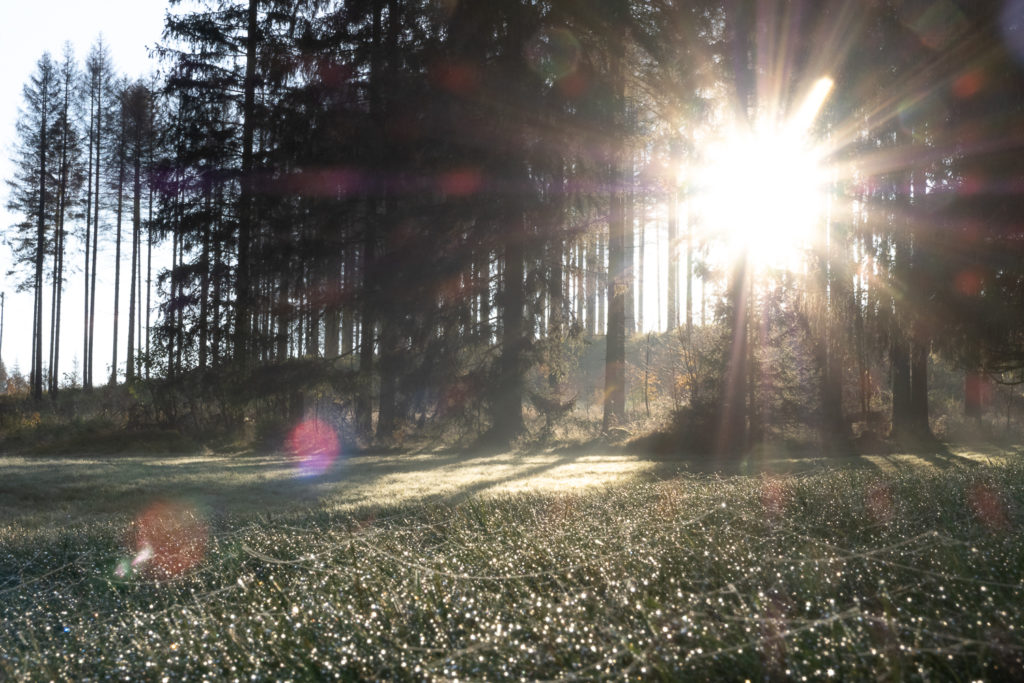
There are already many articles about the Hexenstieg with exact and detailed descriptions of the way...
In this Article you will learn
- Which 10 highlights you should not miss during your hike on the Hexenstieg in the Harz Mountains... sometimes they are not so directly on the way.
- Why the Hexenstieg is so well suited as a first step for multi-day hiking tours.
- You'll also get lots of helpful tips for planning your hike, such as how to get there and back, where to stay or maps.

But first:
What is it about the Witches?
The Harz region is known for its witches. They gather at the Hexentanzplatz in Thale, ally themselves with the devil on the Brocken and hang in every souvenir store as little dolls riding a broom.
This reputation originated primarily from Goethe's work Faust. But the Brocken (also known as Blocksberg) was already considered a meeting place for witches previously. This is where the witches flew to the "witches' sabbath" to renew their pact with the devil.
Unfortunately, the Harz was also particularly in the spotlight at the time of the witch hunt. But fortunately these times are over. Instead, the Harz is now known for its Walpurgis celebrations, which take place every year on April 30. Particularly celebrated is the Hexentanzplatz Thale and Schierke.
Tip: How about hiking the Harzer Hexenstieg for Walpurgis ? Or on Halloween , like we did? Halloween is not such a big deal in the Harz, but the great foliage color in the fall is hard to top in good weather. It was especially beautiful on the last two stages.

At a Glance: the Hexenstieg in the Harz Mountains
Length: approx. 96 kilometers; Brocken bypass approx. 107 km
Duration: About 5 days
The Hexenstieg in the Harz Mountains is about 96 kilometers long and is usually divided into five stages. But the daily stages can be arranged individually depending on your own fitness and endurance. How exactly you divide the individual stages also depends on the available accommodation. So one stage can be a little longer or a little shorter. Early booking is worthwhile, then you have the greatest flexibility.
The direct route leads from Osterode over the Brocken to Thale. There is also the possibility to bypass the Brocken via St. Andreasberg and Braunlage. Then you walk less altitude meters, but the route is a little longer with 107 kilometers.
A detailed description including map, altitude profile and GPX data for navigation can be found at Harzinfo.
- Stage 1: From Osterode to Buntenbock: Length: 11,62 km; Ascent: 620 m; Descent: 227 m
- Stage 2: From Buntenbock to Torfhaus : Length: 21.99 km; Ascent: 804 m; Descent: 556 m
- Stage 3: From Torfhaus over the Brocken to Drei-Annen-Hohne : Length: 19.75 km; Ascent: 1141 m; Descent: 542 m
- Stage 4: From Drei-Annen-Hohne via Rübeland to Altenbrak : Length: 28.6 km; Ascent: 170 m; Descent: 412 m
- Stage 5: Altenbrak to Thale : Length: 14.10 km; Ascent: 336 m; Descent: 173 m

10 Highlights of the Hike on the Hexenstieg in the Harz Mountains
#1 Mining History and the Oberharzer Wasserregal (Upper Harz Water Regal)
#2 Torfhaus and Dinner at the Bavaria Alm
#3 Torfhaus National Park Visitor Center
#4 Upland Moor along the Goethe Trail
#5 Brocken Summit - the highest Mountain in the Harz Mountains
#6 Brocken Railway
#7 Schierker Feuerstein: Schnapps and Granite Rocks
#8 Rübeländer Dripstone Caves
#9 Suspension Bridge "Titan RT" over the Rappbode Dam
#10 "Grand Canyon of the Harz" - Roßtrappe and Hexentanzplatz near Thale

#1 Mining History and the Oberharzer Wasserregal (Upper Harz Water Regal)
The Upper Harz was once the most important ore district in Germany. Iron, lead, copper and silver were primarily mined here. In the period from the 16th to the 19th century, about 40-50% of the silver mined in Germany came from the Upper Harz. For centuries, the people of the Harz lived with and from mining. But with the closing of the last mine in Bad Grund on March 28, 1992, the mining epoch in the Harz was over.
Mining in the Harz has left its mark on the landscape. Wood was needed for ore processing and gallery construction. The original forests were cleared and reforested with fast-growing spruce monocultures .

The technical equipment in and around the mine was powered by water. The Oberharzer Wasserregal was created between 1536 and 1866 to store and transport water to the mines. It comprised 120 dam ponds, 500 kilometers of water ditches and 130 kilometers of underground water transfer and solution tunnels. Due to its uniqueness, the Oberharzer Wasserregal is protected as a UNESCO World Heritage Site. On the way you will find again and again buildings of the Wasserregal with information boards, especially on the stages 2 and 3.

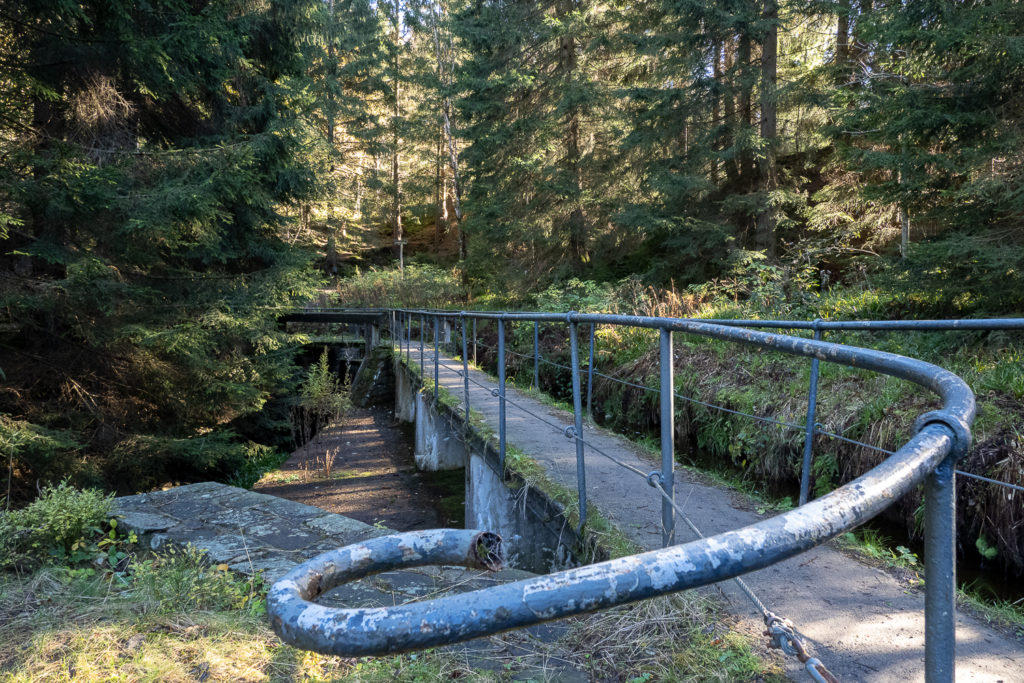
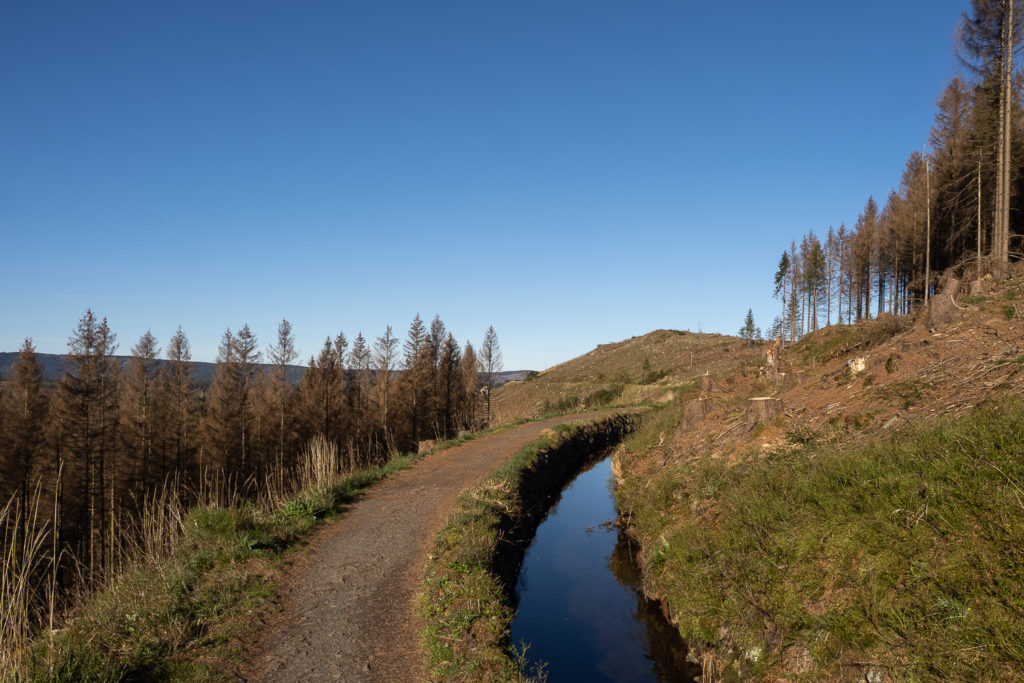
More info about the Oberharzer Wasserregal.
Mining museums and show mines in the Harz Mountains
#2 Torfhaus and Dinner at the Bavaria Alm
Torfhaus is the highest settlement in Lower Saxony at about 800 meters above sea level. It is a popular destination and consists mainly of tourist facilities. In addition, Torfhaus is an easily accessible starting point for various hiking tours.
Until the German reunification in 1990, Torfhaus was mainly known as a viewpoint of the nearby, but at that time unreachable Brocken. Even today, the view of the Brocken is fantastic in clear weather. But that doesn't seem to be enough for some people: at the end of May 2021, construction work started on a 65-meter-high observation tower.
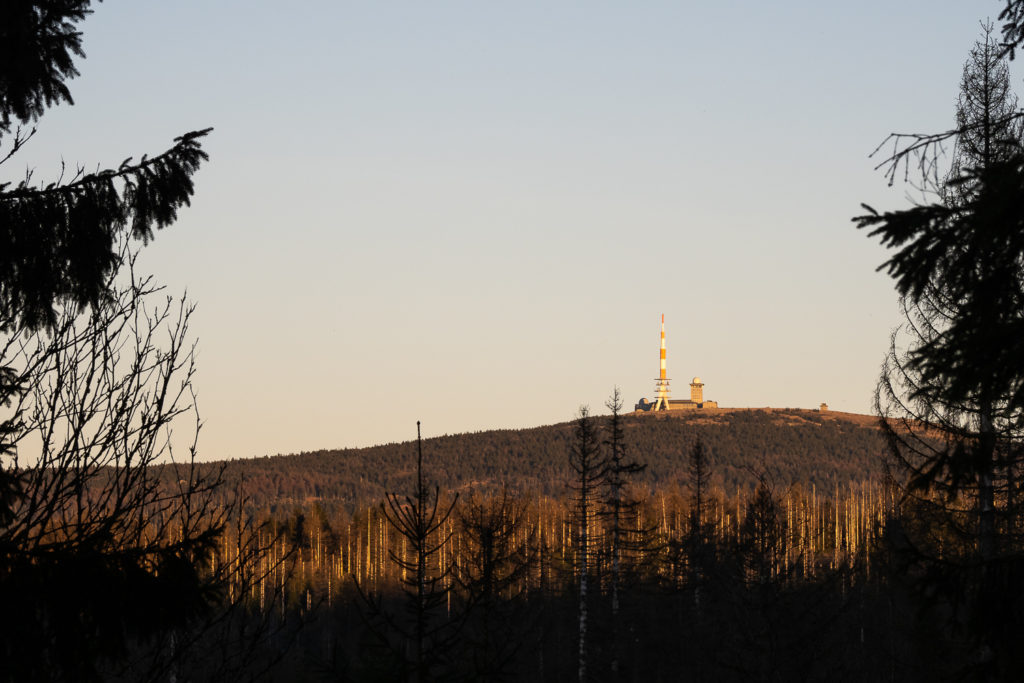
By the way, the small village owes its origin to the peat extractionwhich was operated here from 1573 to 1786. However, since the peat dried poorly in the prevailing weather conditions, peat mining in the Upper Harz was discontinued.
When you have reached your second day's destination Torfhaus in the evening, you have earned a reward! The rustic Bavaria Alm at Torfhaus is just the right place. It's best to reserve a table, especially if you want to stop there on the weekend.
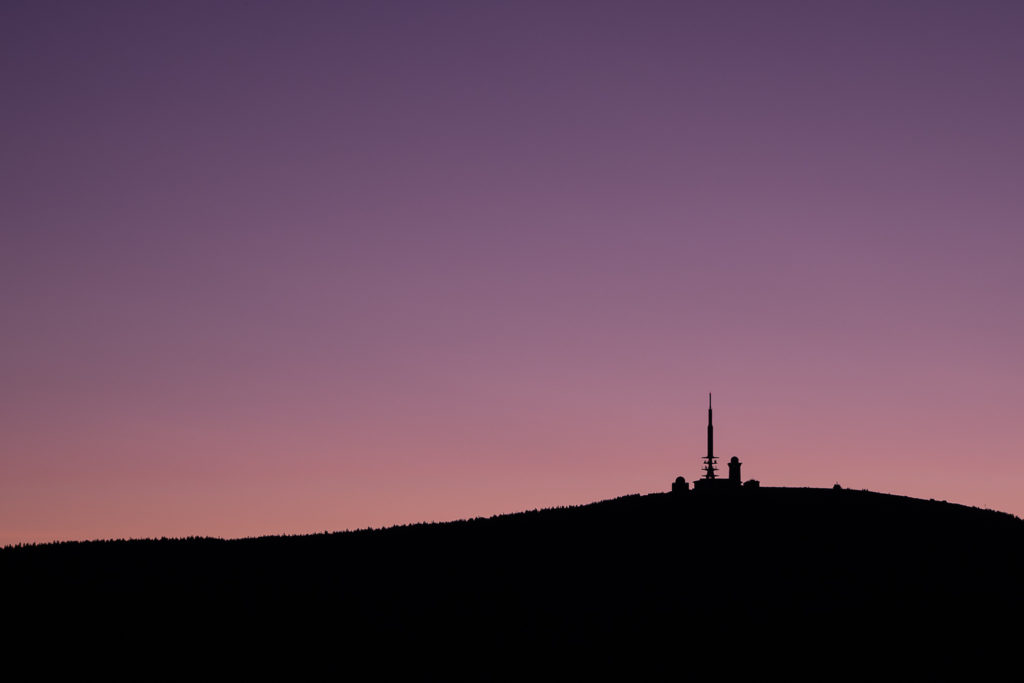
#3 Torfhaus National Park Visitor Center
At Torfhaus, the central contact point for all hikers and nature lovers is the National Park Visitor Center. Here, an exhibition on two floors informs about the national park and about the wilderness that is being created here. In the Shop you can also buy hiking maps, Harz and nature books as well as small souvenirs.
Opening hours are from April to October daily 9 am - 5 pm. It might be a little tight if you want to hike the long distance to Drei Annen Hohne that day. But if you plan your stage a little shorter and hike, for example, only to the Brocken or Schierke, then you have time to visit.
By the way: The Torfhaus is also a biker meeting place. If you are there in the afternoon, you can marvel at tens of hot stoves.

As a little side note:
Before my studies, I did a three-month internship at the Harz National Park Administration, helping to develop exhibition content and giving guided tours. Working with the forester was a particular challenge: We mapped damage to spruce trees and usually had to trudge through knee-high snow. With today's equipment, that's not so bad. But back then, I only had ankle-high sneakers and knitted woolen boot tops from my mom. Those were the days 😉
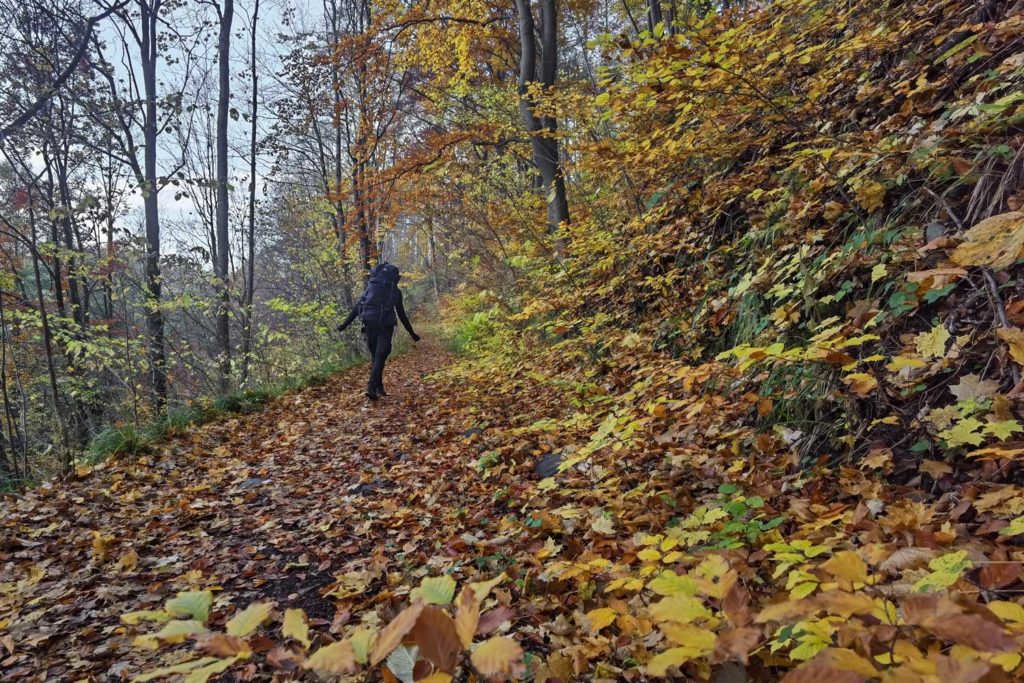
#4 Upland Moor along the Goethe Trail
The picturesque views and legendary places in the Harz Mountains inspired Goethe's Faust. So it is obvious that a trail in the Harz Mountains is also named after the famous writer . The Goethe Trail is 16.3 km long and leads from Altenau via Torfhaus to the Brocken. The trail is particularly beautiful at the Abbegraben and the Großes Torfhausmoor. As soon as the high moor is reached, a wooden plank path branches off into the moor. In clear weather, you can see the Brocken particularly well from here.
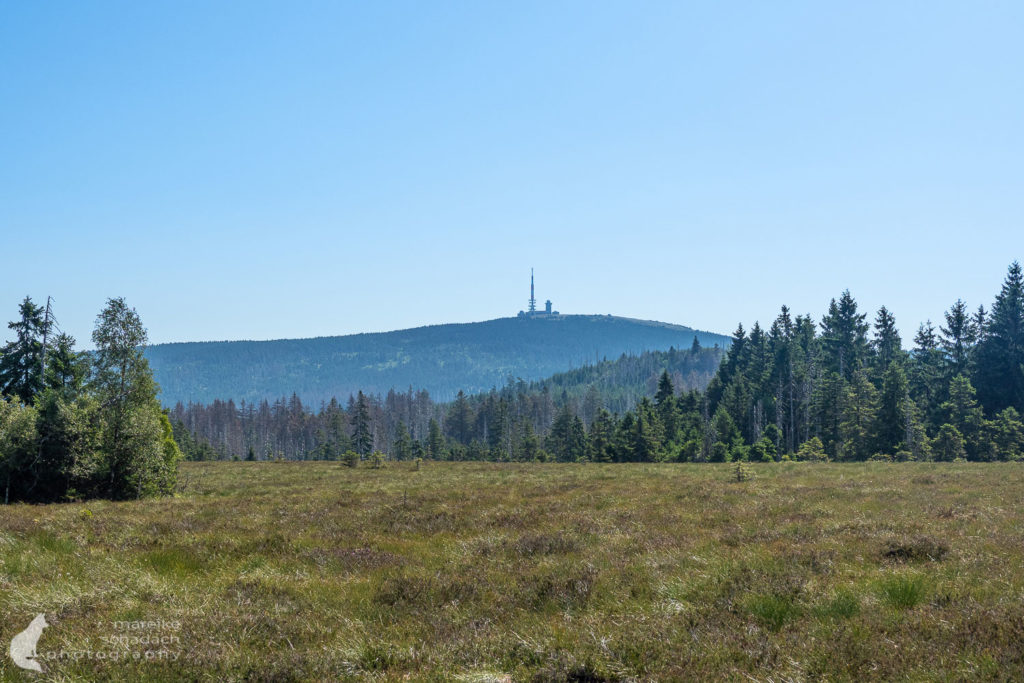
The Torfhausmoor is located at an altitude of about 800 meters in an area with particularly high precipitation. As a rain moor, it is supplied exclusively by precipitation and by mineral salts from the air. It is about 30 hectares in size and has a peat layer that is over five meters thick and 10,000 years old. Peat was mined here from 1713 to 1786, hence the place name Torfhaus.
Raised bogs are low-mineral-salt, acidic and wet habitats. Everything that lives here must be adapted to these extreme conditions. These include sphagnum mosses, cotton grass, broom heath, dwarf birch or the round-leaved sundew. The fauna consists mainly of insects and frogs.
#5 Brocken Summit - the highest Mountain in the Harz Mountains
The Brocken is with 1141,2 meters the highest mountain in the Harz Mountains and also one of the highlights of the Hexenstieg. However, the climate up here is harsh, similar to that of Iceland or the high altitudes of the Alps. Heavy storms up to hurricane force are not uncommon here. In addition, it is the foggiest place in all of Germany: on more than 300 days a year, the summit is at least temporarily submerged in fog.
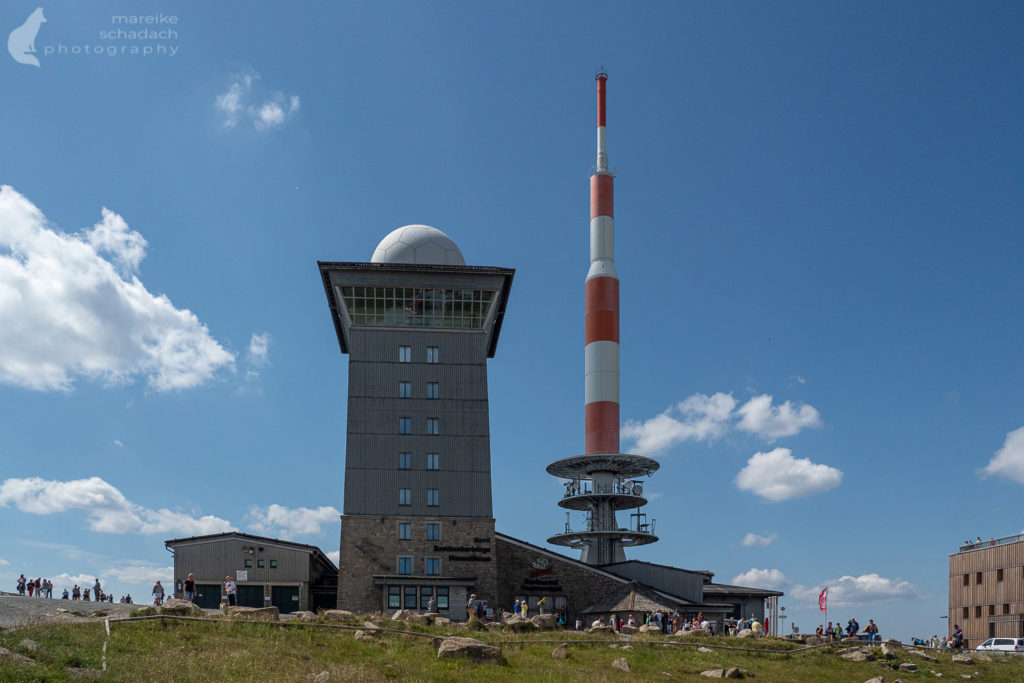
The Brocken summit is the only mountain in the German low mountain range above the timberline.
At the time of German division, the Brocken was located in the immediate border area. From August 1961 it became a restricted area and was no longer accessible to hikers. A three-meter-high wall surrounded the military summit. The listening stations set up here intercepted radio traffic in almost all of Western Europe.
After reunification, the Brocken summit was renaturalized at a cost of millions. The Harz narrow-gauge railroad also runs up to the summit again. If you want to stay longer than an afternoon, you can stay at the Brocken Hotel and a restaurant will take care of your physical well-being. In addition, the Brockenhaus houses the visitor center of the Harz National Park and the Brocken Garden.

#6 Brocken Railway
The Harz narrow gauge railroad is a "must see" for all visitors to the Harz mountains. You can see it especially well at the Brocken itself, of course, or at the stations Schierke and Drei Annen Hohne. Most of the time you can hear the steam train coming from far away or see the dark smoke of the locomotive in the distance.
Tip: If the Hexenstieg stage from Torfhaus to Drei Annen Hohne is too far for you, you can cheat a little and take the Brocken to Schierke and/or Schierke to Drei Annen Hohne with the Brockenbahn.
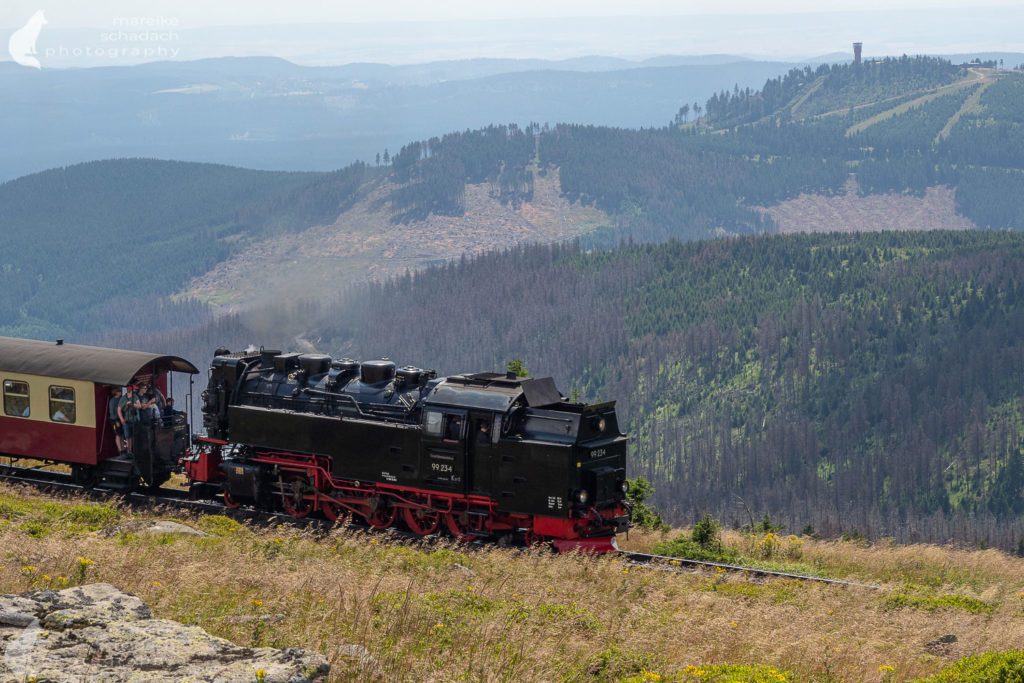
The meter-gauge route network of the Harz narrow-gauge railroads extends over a length of 140.4 km and is in operation all year round. In addition to the 19-kilometer-long Brockenbahn, there is also the Harzquerbahn and the Selketalbahn.
For the trip to the Brocken there is a uniform fare of 34 euros (one way) from all stations of the HSB. Current prices and information can be found here.

#7 Schierker Feuerstein: Schnapps and Granite Rocks
The village of Schierke is known for its witches and for the surrounding granite rocks, such as theFeuerstein, the Trudenstein or the Ahrendsklintklippe. But also on the drink menus the name Schierke appears again and again: as "Schierker Feuerstein". The herbal liqueur has tradition and definitely belongs in the picnic bag on this section of the Hexenstieg.

The recipe for Schierker Feuerstein was developed in 1908 by pharmacist Willy Drube in Schierke. The herbal liqueur was named after the Feuerstein cliffs in Schierke, because the reddish-brown color of the herbal liqueur is reminiscent of the reddish granite coloring of the cliffs.
Schierke was considered the "St. Moritz of the North". Only a few magnificent villas and hotel complexes remain from that time. During the German division, Schierke was called the "spa of the working people" from 1951.
Particularly beautiful places for a picnic are at the granite rocks that you can find around Schierke, such as at the Trudenstein.
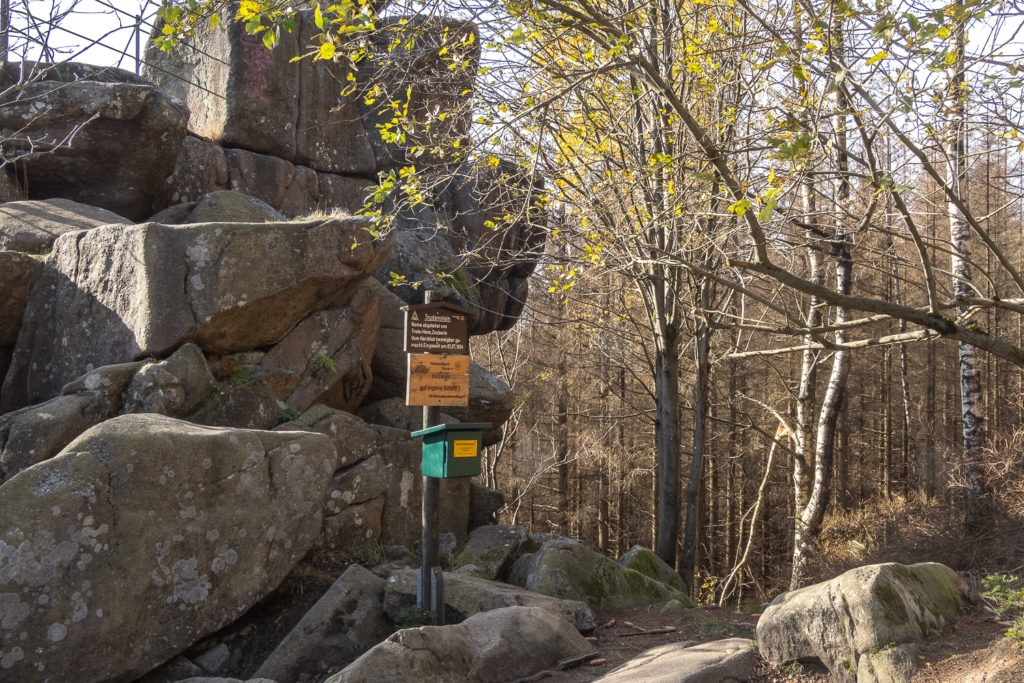

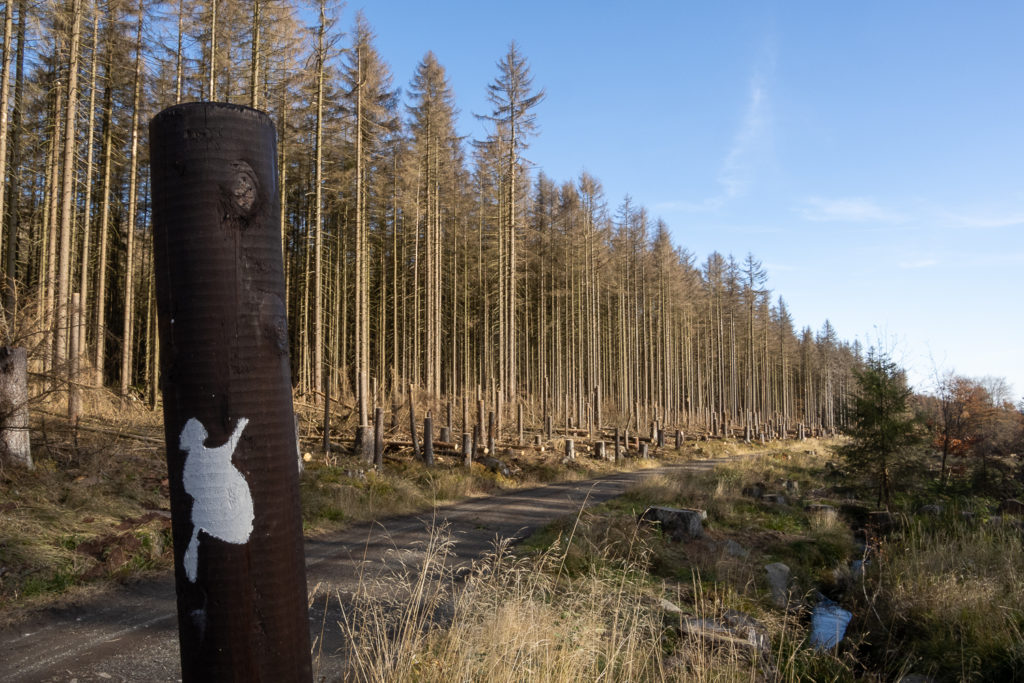

#8 Rübeländer Dripstone Caves
There are several dripstone caves in the eastern Harz that are open to tourists. Two of these caves are located in the village of Rübeland: the Baumannshöhle and the Herrmannshöhle.
The Baumannshöhle is the oldest show cave in Germany. It is characterized by a special abundance of different dripstone formations. The largest cavity has even been turned into an underground natural stage where concerts and theater events take place. For more information on the program, admission and opening hours, visit the website of the Harz Caves.
The cave was already discovered in the 16th century by the miner Friedrich Baumann. Guided tours through the cave have been taking place since 1646. Today you can walk through the cave on your own and learn everything you need to know from information boards. To protect the stalactites and prevent accidents, photography in the cave is unfortunately not allowed.


Trekking boots, hiking poles, backpacks and everything else you might need for your tour on the Hexenstieg in the Harz Mountains can be found at Bergzeit.
#9 Suspension Bridge "Titan RT" over the Rappbode Dam
The suspension bridge over the Rappbode Dam is not directly on the Hexenstieg, but the small detour is worth it. After all, the "Titan RT" is the longest of its kind in the worldat the time of its completion with 458 meters. From the bridge you have a fantastic view of the Wendefurth reservoir and the gigantic concrete wall of the Rappbode dam.
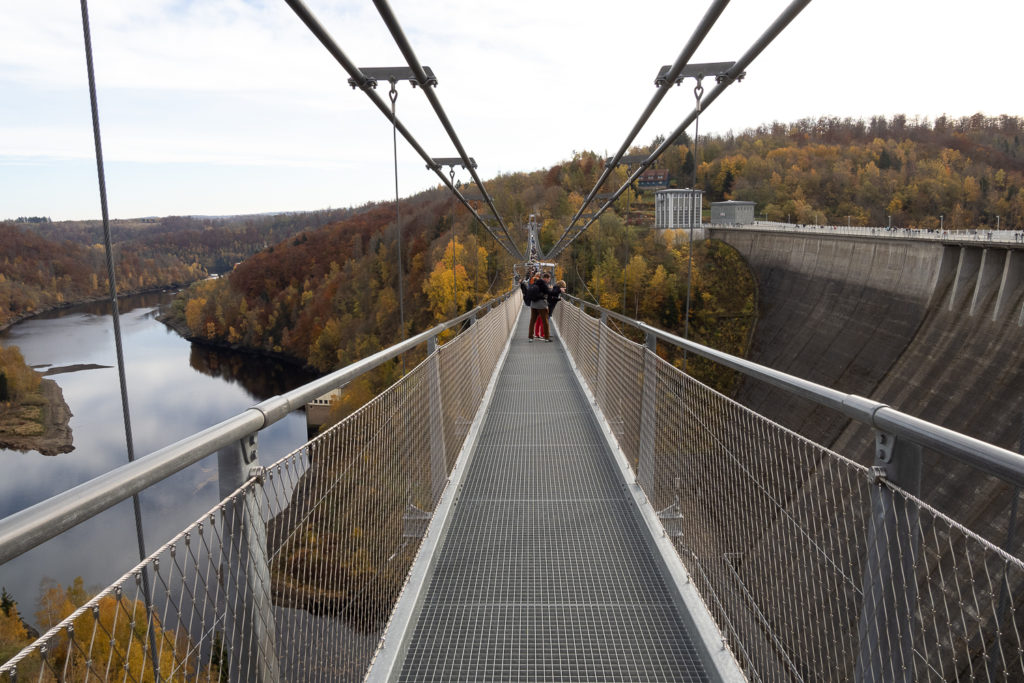
The bridge hangs about 100 meters above the Rappboden valley. You have to be free from giddiness! Because the floor of the 1.2 meter wide bridge consists only of grating plates. And despite the stable anchorages with steel cables, the suspension rope bridge sways significantly. And if the adrenaline rush of walking on the bridge is not enough, there is a zipline and the pendulum jump "GigaSwing".

The suspension bridge is open all year round and daily from 8 am to 10 pm. You should allow about an hour for your visit. The bridge can only be used as a one-way route from northwest to southeast and is entered via turnstiles what can be tight with a hiking backpack.
In case of heavy rain, hail or a wind force over 6 Beaufort, the bridge is closed for safety reasons. More information can be found on the website of the suspension bridge.
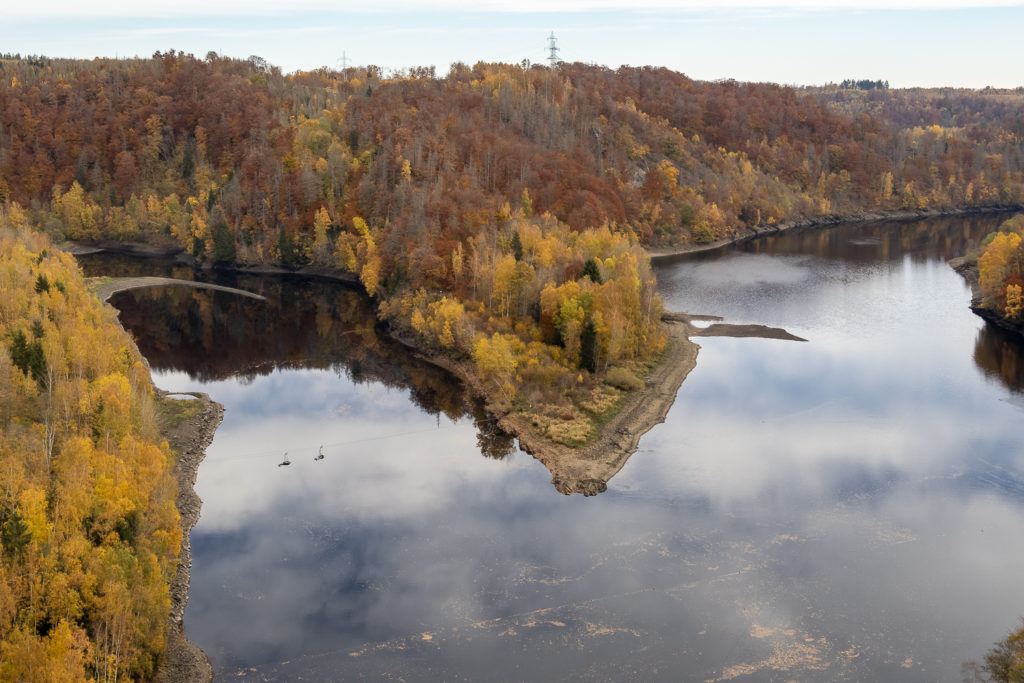
#10 "Grand Canyon of the Harz" - Roßtrappe and Hexentanzplatz near Thale
The crowning glory of the Hexenstieg is the Roßtrappe and the Hexentanzplatz (Witches' Dance Place) in Thale. From here you have a view of the Bode Valley, which is one of the best hiking areas in the Harz and is rightly called the "Grand Canyon of the Harz" . Here you can end your hike with a relaxing drink. Both places are worthwhile and can either be hiked to or reached from Thale by chairlift or cable car . At both viewpoints there are restaurants where you can sit inside or outside.

The Rosstrappe is a 403 meter high granite rock on the left bank of the river Bode. On the rock there is a large depression that looks like a huge hoof print. According to legend, this imprint comes from the horse of the king's daughter Brunhilde. Fleeing from the giant Bodo, she drove her horse to jump over the valley. The horse's hoof dug deep into the rock as it landed. However, her pursuer fell during the jump into the river in the valley, which was henceforth called Bode.
I love such stories. In truth, however, the hoofprint is a man-made depression and probably belonged to a pre-Christian place of worship, possibly a sacrificial pool.
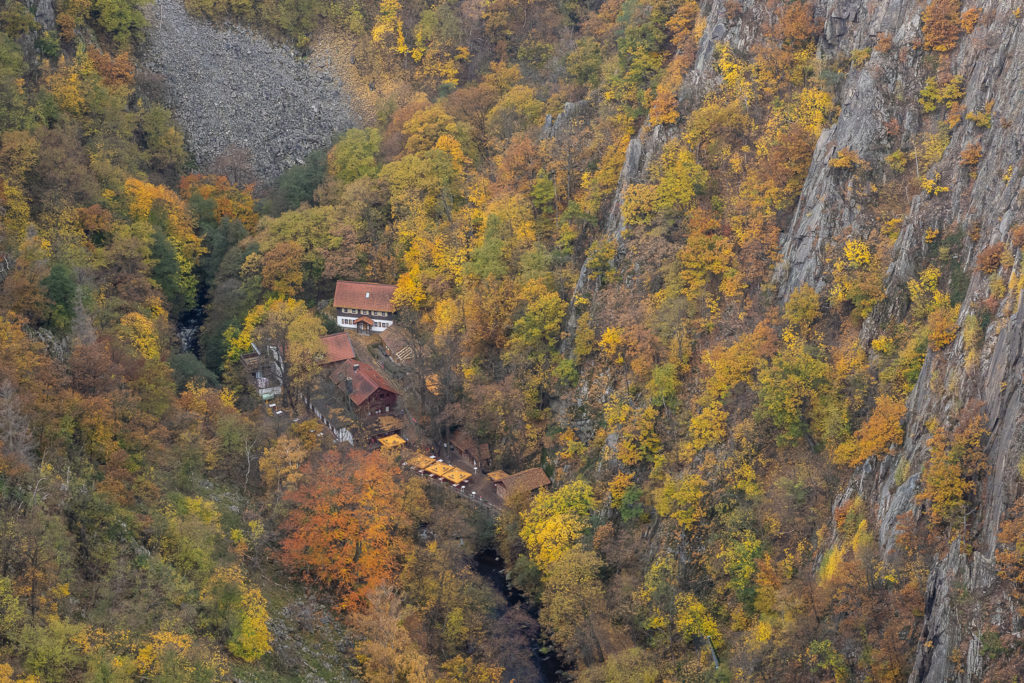
Located at an altitude of 450 meters, Hexentanzplatz (Witches' Dance Place) is probably one of the most legendary places in the eastern Harz Mountains. It is said that witches gather on this mountain plateau every year on Walpurgis Night and celebrate their rituals. Together they set off from here to the Brocken, where they then dance their devil's Sabbath around the blazing witches' fire.
Arrival and Departure to the Hexenstieg in the Harz Mountains
The starting and ending points of the Hexenstieg in the Harz Mountains are the towns of Osterode and Thale. Both are easy to reach by regional train or bus . Since the hike is a distance hike, getting there by public transportation makes the most sense. Otherwise, you would have to take a cab back to the starting point or face a lengthy bus ride with multiple transfers.

On the page of Hatix you can find an overview of the bus connections in the Harz.
A cab ride to the starting point takes about an hour. However, you also have to calculate waiting times, because the cab companies do not have so many vehicles in use. It's best to find out on the phone how much the ride will cost (about 140 euros).
Tip: Are you from Berlin? Then you can take the Harz-Berlin-Express (HBX) from Berlin to Thale and back in 3.5 hours without changing trains.
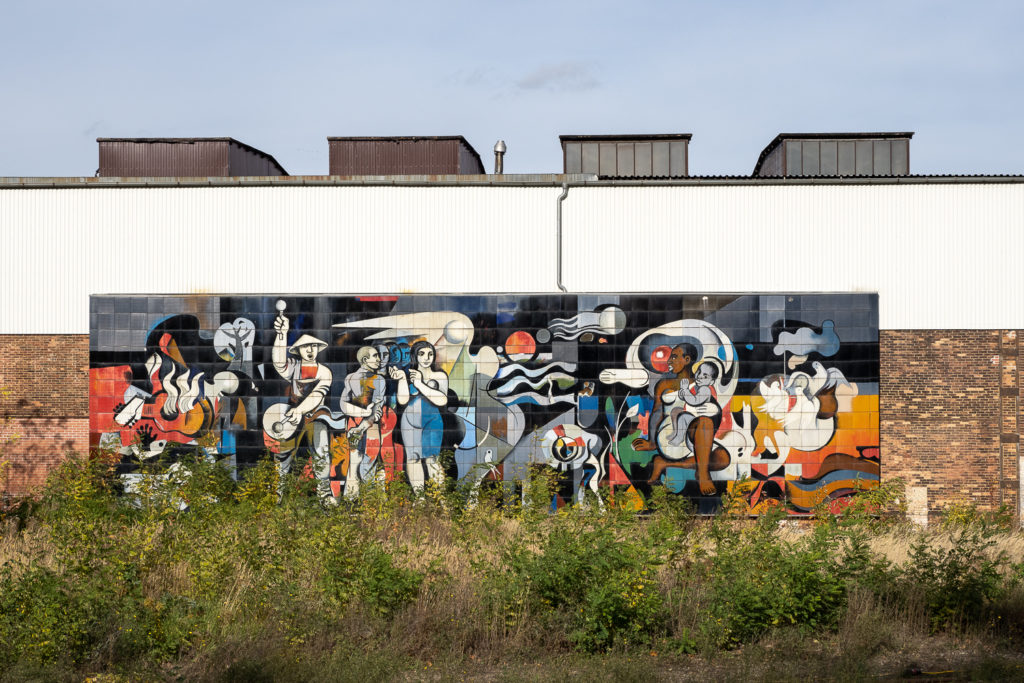
Signposts on the hiking route
The Hexenstieg is marked throughout. The hiking signs bear the name "Harzer-Hexen-Stieg" and show the direction and distance to the next intermediate destination. In the Harz National Park, the Hexenstieg is marked with the white witch in a green circle as a logo.
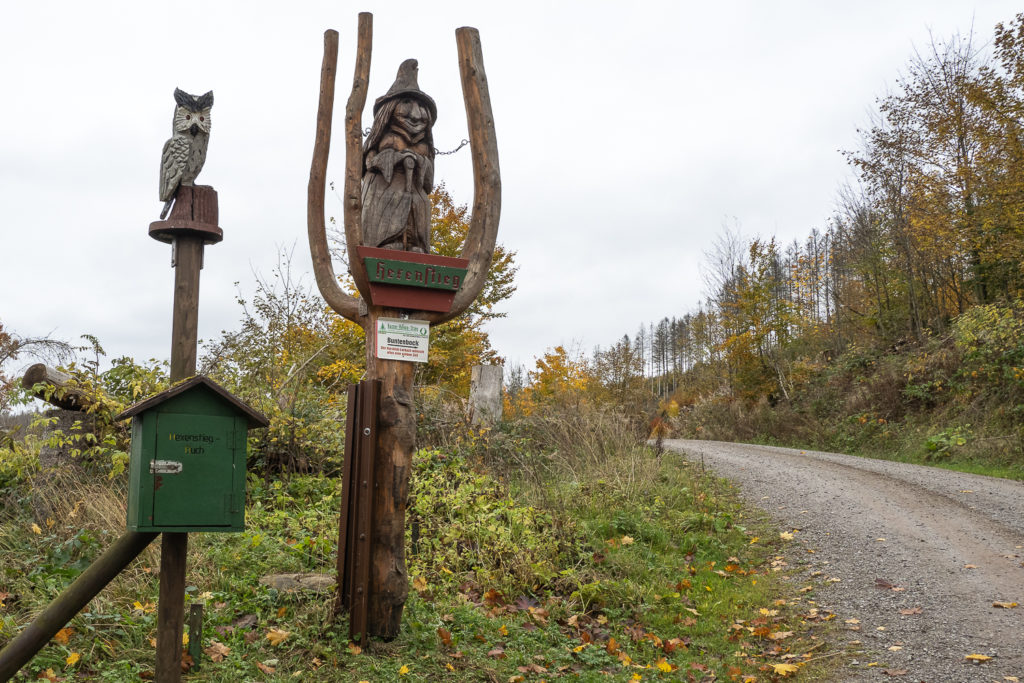

Hiking Map & Hiking Guide
You can order the map of the Hexenstieg in the Harz* and the hiking guides* at Amazon by clicking on the respective picture.
Accommodation
The available accommodations determine the length of each stage. Therefore, you should book as early as possible. We didn't do that and one of our stages was significantly longer as a result. Unfortunately, there is not a campground at each stage, so accommodations make the hike a bit more expensive.
Worthwhile and well located accommodations that I can recommend are for example:
- Buntenbock: Pension Holl und Boll Am Hexenstieg*
- Torfhaus: Torfhaus Harzresort*
- Brocken: Brocken Hotel
- Altenbrak: Pension & Restaurant “Zum Harzer Jodlermeister”*
If you prefer to travel only with a light daypack, you can also have your luggage transported between the accommodations. Either self-organized with the help of cabs or with a bookable tour, for example with Hiking in the Harz. Is only unfortunately significantly more expensive ... for two people from 990 euros.
Why the Hexenstieg is perfect for Beginners?
You are not sure if you can do the almost 100 kilometers? But you want to give it a try? Maybe even with a pack? Then the Hexenstieg in the Harz Mountains is just the right tour for you. Because if it should be too much, then you can also go a part by bus. And since you pay visitor's tax when you stay overnight in the Harz, the bus rides are even free for you. The only catch: especially on weekends there are not so many rides, so you have to plan ahead. In the worst case, you can also just take a cab to pick you up on the way.
Here again the bus line network: bus connections in the Harz.
Many hosts also offer support on request, for example luggage transport or shuttle rides to the start of the day's section. So you can adjust the length of your routes individually. In addition, there are always restaurants along the way where you can fortify yourself. So you need to take less provisions with you and you can also fill up on drinking water. You can see exactly where the restaurants are located on Google Maps or Maps.Me, for example. Attention: check beforehand whether the restaurant is open!

Tip: Do not forget to tell your accommodation if you arrive later in the evening. Often you hike longer than planned.
Book Recommendations for the Harz Mountains
You want to know where to go? Then I can recommend these hiking guides*.
You can order these books at Amazon with a click on the pictures. If you buy a product via one of these affiliate links, I get a small commission and you help me to keep filling Fernweh-Motive with interesting articles. The product will not be more expensive for you.
Do you know the Hexenstieg in the Harz Mountains and have you perhaps hiked it yourself? How did you like it there? Do you have any questions or suggestions about my article? If so, then write me a comment!
Do you want to know when there are new articles on my blog? Then follow me on Facebook, Pinterest or Instagram. I would also be very happy if you share my article with your friends.
Recommendations for further Reading
Do you love the long hikes as much as I do? Then you might also be interested in my articles about the Berlin Wall Trail or a Trekking Tour to the Greenlandic Ice Sheet.
